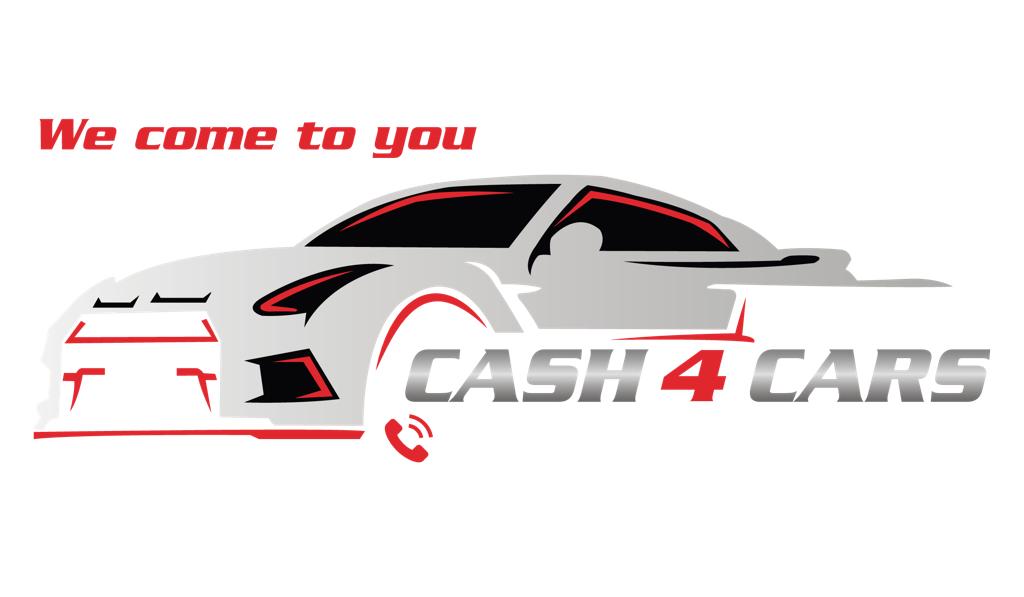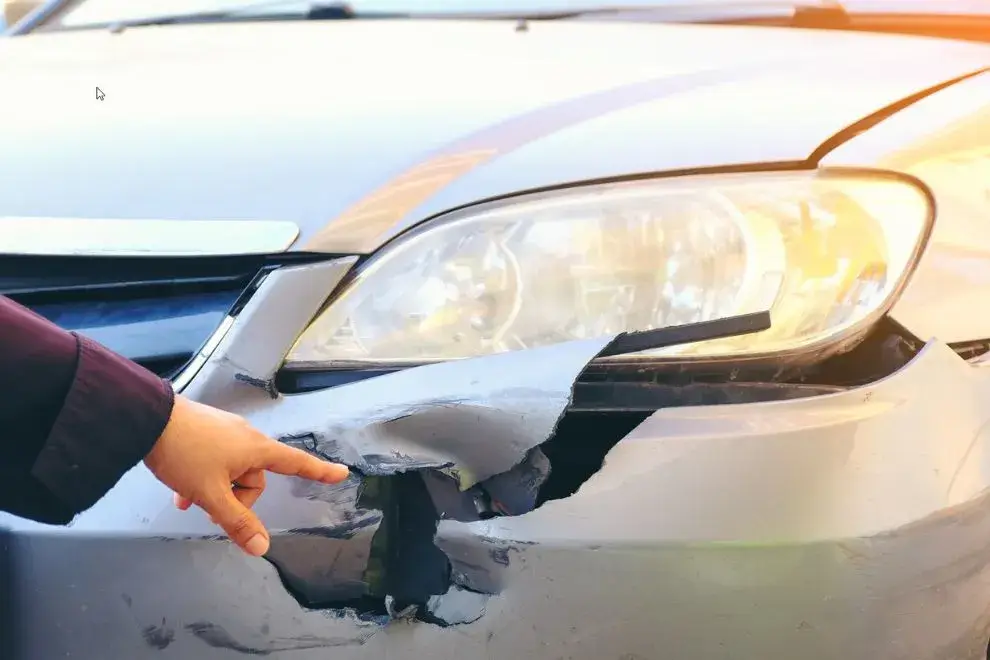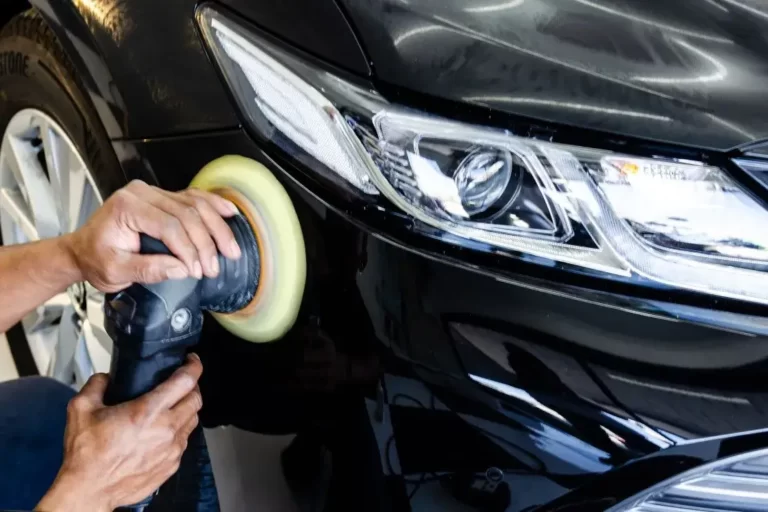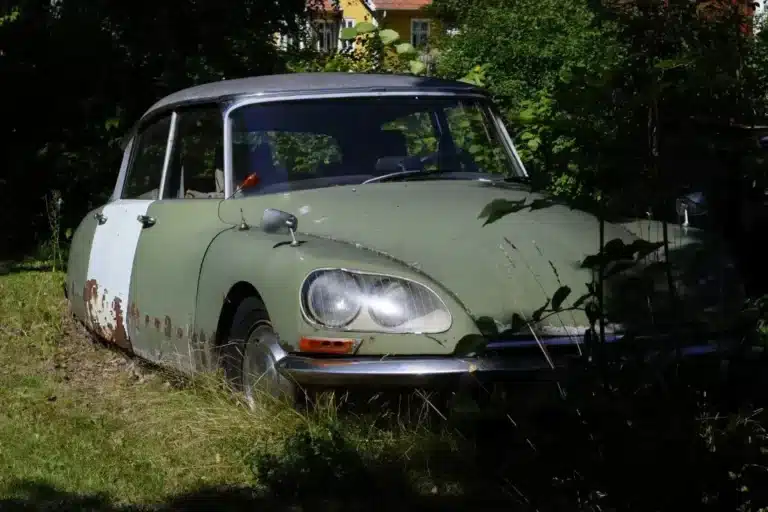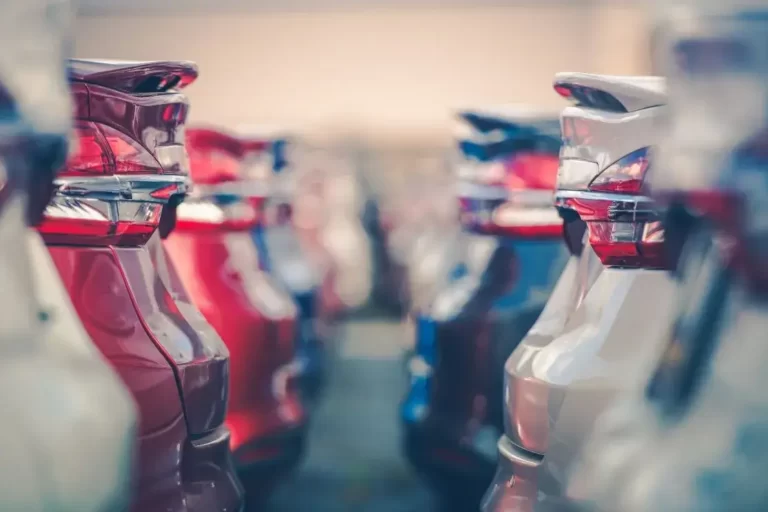Car Hit and Run in Parking Lot: Can You Still Sell It for Cash
Picture this: you’re having a normal day, running errands, or grabbing a bite, only to return to the parking lot and find your car damaged by a hit-and-run driver. Now, you’re left with a damaged vehicle, a thousand questions, and the lingering thought – can you still sell it for cash? This blog post will walk you through the essential steps after experiencing a car hit-and-run in a parking lot.
We’ll discuss how to assess the damage to your parked car and gather crucial evidence of the hit-and-run incident. Our guide will also cover the importance of contacting the police to file a report and checking for security camera footage that might reveal the perpetrator.
Lastly, we’ll touch upon the value of locating potential accident witnesses, as their testimonies could be invaluable in resolving the situation. Stay tuned as we delve into this unfortunate scenario and help you navigate the aftermath of a hit-and-run incident in a parking lot.
Understanding Your Options After Your Parked Car Is Hit
In this section, we’ll guide you through gathering vital evidence, engaging with witnesses, and filing a police report to hold the perpetrator accountable while shedding light on the various options available during this trying time.
Gathering Evidence
After a hit-and-run in a parking lot, gathering evidence is vital for insurance, legal reasons, and preventing future incidents. To effectively collect evidence, take high-quality photos of the damage and surroundings, and gather any debris or paint transfer for expert analysis.
Seek out witnesses from nearby workers or visitors and check security cameras for footage of vehicles entering or leaving when the incident occurred. Combining this evidence can help reconstruct the events and identify the responsible party.
Filing A Police Report
Filing a police report is essential after gathering evidence in a hit-and-run accident involving parked cars. This official record establishes liability and helps locate the perpetrator.
To file a report, contact your local police station and provide details about the incident. Be thorough, presenting photo evidence, witness accounts, security footage, and specific information about the location and timing. Discussing potential damage to the other car may also help identify the vehicle involved.
Prompt reporting supports insurance claims, enhances public safety, and deters future negligence. Diligent documentation and timely action contribute to resolving hit-and-run cases in parking lots.
Dealing With Car Insurance Providers In A Hit-And-Run Accident
Suppose you have been involved in a hit-and-run accident. In that case, contacting your car insurance provider as soon as possible is important. Be sure to keep a copy of all documents related to the incident, such as police reports, witness statements, and photos of the damaged vehicle.
This can help you in filing a claim with the insurance company. It is also important to ensure you have all the necessary information about the other parties involved, such as their contact details, car make and model, and license plate number.
Contacting Your Insurance Provider
Upon discovering your parked car damaged by a hit-and-run driver, remain calm and promptly contact your insurance company for assistance in filing a claim. Swift action helps expedite financial aid for repairs or replacement.
Provide your insurer with relevant details, including location, time, damage extent, police report, and photographs. Thorough documentation aids in accurate claim assessment and fair compensation. Inform law enforcement and consult witnesses to strengthen your case and streamline resolution.
Collaboration with involved parties helps ensure a swift and fair outcome, allowing you to move on from this stressful experience.
Collecting Necessary Documentation
Collecting documentation is vital when dealing with insurance providers after a hit-and-run involving a parked car. Notify your insurer with incident specifics, such as location, time, the extent of damages, and any license plate numbers.
Filing a police report bolsters your case by providing an authoritative record and helping insurers identify potential witnesses. Photographs of the scene and damage expedite processing times and substantiate claims.
Thorough documentation ensures fair reimbursement, allowing you to focus on recovery without financial hardship or delay.
The Legal Process Of A Hit-And-Run Parked Car Accident
When a parked car is involved in a hit-and-run incident, a police report should be filed as soon as possible. Uninsured motorist benefits may be available if the driver is not known. However, there may be a deductible associated with these benefits. Those involved in the incident may wish to pursue small claims court if the other vehicle’s driver cannot be identified.
In court, they may be able to seek compensation for damage to the vehicle. If the parked car is deemed to be a total loss, the owner may be able to sell it for cash. It is important to note, however, that the owner may not be able to receive the full value of the vehicle in such a case.
Police Report
A police report plays a crucial role in the legal process of handling a hit-and-run parked car accident. When an individual discovers their vehicle has been involved in a parking lot accident, it is essential to contact the authorities and file a police report immediately.
This documentation provides formal evidence that the incident occurred and assists with subsequent insurance claims or court proceedings.
Furthermore, if the responsible party is later identified, having an official record may prove invaluable for holding them accountable for their actions.
In many cases, victims of hit-and-run accidents cannot identify the driver who caused damage to their parked car; however, this does not mean they must bear the financial burden alone. A detailed police report can help support claims against unknown drivers by providing valuable information such as location, time, and potential witnesses.
Additionally, some insurance policies provide uninsured motorist benefits specifically designed to cover damages incurred from hit-and-run accidents when no at-fault party is available for compensation.
Despite being left with a damaged car due to a hit-and-run parking lot accident, selling it for cash remains an option for those seeking financial relief. Utilising services specialising in purchasing damaged vehicles allows individuals to receive funds quickly without navigating complex legal processes associated with small claims courts or state laws governing hit-and-run incidents.
While obtaining fair compensation might be challenging under these circumstances, filing a thorough police report and exploring options like selling one’s car for cash ensures victims do not suffer further losses from unfortunate events outside their control.
Uninsured Motorist Benefits
Uninsured motorist benefits provide a financial safety net for hit-and-run parked car victims, compensating them when the at-fault party is unknown or uninsured. A detailed police report is essential for supporting such claims.
Promptly contacting your insurance company and providing report details helps determine coverage applicability. If obtaining fair compensation is challenging, selling the damaged car for cash offers an alternative solution, avoiding complex legal processes.
Exploring options like selling the vehicle ensures victims minimise losses from events beyond their control.
Small Claims Court
If insurance doesn’t cover hit-and-run parked car damages, small claims court offers an alternative for seeking compensation. These courts handle minor disputes and offer a streamlined process accessible even to those unfamiliar with legal intricacies.
To file a claim, gather relevant documentation such as police reports, damage photos, and repair estimates. This information helps the court assess the case and determine if sufficient evidence links the defendant to the damage. Successful plaintiffs may recover repair funds or out-of-pocket expenses from alternative transportation.
Though challenging, legal representation is often unnecessary in small claims court, as presenting your case and supporting documents may be enough. Despite monetary limitations, small claims court offers valuable recourse for hit-and-run parked car victims.
Selling Your Damaged Car After A Hit-And-Run Incident
When selling a car after a hit-and-run incident, assess its value, find a trustworthy buyer, and evaluate the damage for potential repairs. Ensure all paperwork is in order and be honest about the vehicle’s condition and any related damages to facilitate a smooth, safe transaction.
- It is important to assess the car’s value to determine how much it can be sold for.
- Finding a buyer for a damaged car after a hit-and-run incident is an important step when selling the car.
- Before selling the vehicle, assessing the damage and making necessary repairs, if possible, is essential.
- All documentation related to the vehicle should be collected and reviewed to ensure all paperwork is in order.
- It is also important to seek a reliable and trustworthy buyer to ensure the transaction is conducted safely.
- Lastly, it is essential, to be honest about the condition of the car and any associated damages when selling it.
Assessing The Value
Upon discovering your parked car damaged in a hit-and-run, you can still assess its value and sell it for cash. To accurately evaluate the car’s worth, consider these factors:
- Research the market price of similar undamaged vehicles using online platforms or professional dealerships.
- Document all damages, including photos, to provide potential buyers with repair insights.
- Seek advice from independent mechanics or automotive experts for unbiased evaluations.
With this knowledge, you can confidently approach buyers, ensuring fair selling prices and smooth negotiations without legal complications.
Finding A Buyer
Upon assessing the value of a parked car involved in a hit-and-run car incident, finding a buyer becomes the next essential step to selling it for cash. As the parking lot accident has damaged the car, identifying reputable buyers interested in purchasing such vehicles is crucial.
Various avenues can be explored when seeking potential buyers; these include online platforms specifically dedicated to buying damaged cars or reaching out to local mechanics interested in acquiring parts from the vehicle.
Utilising social media channels, classified websites, or even enlisting assistance from friends and acquaintances within Australia can assist in widening the search for prospective purchasers. When advertising the damaged vehicle for sale, providing comprehensive information about its condition.
Including photos if possible and any repairs needed due to the parking lot hit-and-run will aid in attracting suitable buyers. Transparency regarding all aspects of the damaged parked car demonstrates honesty and helps generate more accurate offers based on informed decisions made by potential customers.
It is important to remain vigilant throughout this process, as some individuals may attempt to take advantage of one’s situation by offering significantly lower than fair market values for their damaged parked car.
By conducting extensive research beforehand and gathering expert advice, sellers can navigate these challenges while ensuring they receive fair compensation for their vehicle despite being affected by a car hit-and-run incident.
Preparing Vehicle
After identifying potential buyers for the damaged parked car, it is essential to properly prepare the vehicle before showcasing it. Thoroughly cleaning both the interior and exterior can significantly improve its appearance despite any damage sustained from the parking lot hit-and-run incident.
It is also beneficial to address minor issues that do not require extensive repairs or costs, as this could increase the car’s overall value when attempting to sell it for cash.
Documenting all information related to the accident scene, including police reports if available, helps demonstrate transparency with prospective buyers while providing them with a clear understanding of the extent of damages caused by the car hit-and-run event.
Additionally, compiling maintenance records, registration details, and other relevant paperwork ensures that interested parties have access to comprehensive data on the parked car’s history before making an informed decision regarding their purchase.
By diligently preparing the vehicle for sale following a hit-and-run parking lot incident and offering complete disclosure about its condition and history, sellers enhance their chances of securing fair offers from reputable buyers interested in acquiring a damaged automobile.
This approach ultimately aids in achieving a satisfactory outcome despite having experienced an unfortunate event involving one’s parked car.
Preventing Future Hit-And-Run Accidents Involving Your Parked Car
To prevent hit-and-run accidents involving parked cars, consider secure parking, reflective signage, and car alarms. Security cameras in parking lots serve as visual deterrents, while educating drivers about responsible parking and situational awareness further reduces the likelihood of such incidents.
- Secure parking is a measure that can be taken to help prevent future hit-and-run accidents involving parked cars.
- Installing reflective signage on vehicles can make them more visible in parking lots and reduce the chances of a hit-and-run accident.
- Installing car alarms is another measure that can be taken to help prevent hit-and-run accidents involving parked cars.
- Car alarms are designed to alert the owner when someone is attempting to enter the vehicle or is tampering with it.
- Using security cameras in parking lots can also help deter hit-and-run accidents by providing a visual deterrent.
- Finally, educating drivers on the importance of parking responsibly and being aware of their surroundings can help to reduce the likelihood of hit-and-run accidents in parking lots.
Secure Parking
Imagine the dismay of finding your parked car damaged by a hit-and-run. To prevent such incidents, choose secure parking areas to protect your valuable asset.
Pick well-lit, monitored parking spaces to deter potential offenders. Opt for locations away from main roads and high-traffic areas to minimise risk. Use parking facilities with security features like cameras and on-site guards for added safety whenever possible.
Invest in comprehensive car insurance to cover repair costs from hit-and-run accidents. With these precautions and safe parking practices, confidently park your vehicle, knowing it’s protected even when out of sight.
Reflective Signage
Besides secure parking, using reflective signage on your vehicle can help prevent hit-and-run incidents with parked cars. Increased visibility alerts other drivers, reducing the chances of collisions in low visibility conditions.
If a hit-and-run does occur, take photos of the damage and note potential witnesses to file an insurance claim effectively. Regularly review your comprehensive car insurance policy to ensure adequate coverage.
Implementing these proactive measures minimises the risk of hit-and-run accidents and makes you feel more prepared to handle such situations.
Car Alarms
Using security devices such as car alarms is an effective way to prevent hit-and-run accidents involving parked cars. Car alarms detect unauthorised access or movement and trigger an audible alarm to deter potential perpetrators and alert nearby individuals. Installing a suitable car alarm system can significantly reduce the likelihood of being involved in a hit-and-run accident while parked.
Car alarms can also discourage careless drivers from fleeing after causing damage to a parked vehicle. Some insurance companies offer discounted premiums for policyholders with installed alarm devices, making it a cost-effective investment.
Individuals can safeguard their parked cars from hit-and-run incidents by taking preventative measures, including choosing well-lit parking spots, using visible signage, installing car alarms, and reviewing their insurance coverage.
Conclusion
In conclusion, a car hit and run in a parking lot incident involving a parked car can cause stress, but knowing available options like insurance claims, legal processes, and selling the damaged car for cash can help alleviate the situation. It’s crucial to remain vigilant while parking and invest in preventative measures to reduce the chances of such accidents in the future.
Recent statistics show that Car Hit and Run in Parking Lot incidents account for around 14% of all motor vehicle collisions, emphasising the importance of being informed about options and rights in such situations.
Frequently Asked Questions
Q: What should you do if someone hits your parked car and leaves without leaving any contact information?
A: First, check the surrounding area for any witnesses or security cameras that may have captured the incident. Next, take photos of the damage and write down details such as the time and location. Call the police and file a report, then notify your insurance company and provide them with the necessary information to begin a claim.
Q: How do you find the person who hit your parked car in a parking lot if they left the scene without leaving a note?
A: Look for nearby witnesses or security cameras that might have recorded the incident. Contact the parking lot management or nearby businesses to inquire about security footage. If you find any leads, inform the police and your insurance company. Remember that there might be limited ability to track down the responsible party without reliable information.
Q: Can you sell a car that was hit in a hit-and-run accident?
A: Yes, you can still sell a car involved in a hit-and-run accident if the damage hasn’t rendered it inoperable. Be transparent with potential buyers about the nature of the damage and provide any repair estimates if available. The value of the car may be affected by the extent of the damage, and repairs might be required before resale.
Q: How does comprehensive car insurance work in a hit-and-run accident?
A: Comprehensive car insurance covers damages caused by theft, vandalism, natural disasters, and hit-and-run accidents. If you have comprehensive coverage, you can file a claim to help pay for the repairs to your vehicle; however, you will still be responsible for your deductible. If the person who caused the damage is identified and has coverage, their insurance may cover the cost of repairs.
Q: Is the parked car’s owner always at fault for hitting an illegally parked car in a parking lot?
A: Generally, responsibility for an accident involving a parked car lies with the driver who hit the parked car. However, in cases where a car is illegally parked or parked in a manner that obstructs visibility, the fault may be shared. The specific laws and regulations in your area and the circumstances surrounding the incident will ultimately determine the responsibility.
Q: What should you do if you hit someone’s parked car in a parking lot?
A: Stop and assess the damage if you hit a parked car. Take photos of both vehicles and leave a note on the parked car with your contact information, a brief description of the incident, and any pertinent insurance details. Notify your insurance company of the accident and cooperate in the claims process. Failing to leave your information can result in a hit-and-run charge.
Q: If someone hits your parked car and leaves their contact information, do you need to report the accident to the police?
A: Depending on the laws in your area, you may need to report the accident to the police. This is especially true if the damage exceeds a certain monetary threshold or involves injuries. Regardless, it’s always a good idea to file a police report as it can help protect your rights and provide important documentation for your insurance claim.
Q: What happens to your insurance premium if your car is hit in a hit-and-run accident?
A: Your insurance premium may or may not be affected depending on your specific policy and the circumstances of the accident. Insurers may sometimes treat hit-and-run accidents as not-at-fault claims and not raise your premium. However, each insurance company has its own rules and processes, so it’s important to discuss the details of your policy with your insurer.
Q: What are the steps to take if your parked car was hit and run while you were away from the accident scene?
A: Upon discovering the damage, survey the surrounding area for witnesses or security cameras that may have captured the incident. Take photographs of the damage and make a note of the time and location of the accident. Call the police to file a report and notify your insurance company to start the claims process.
Q: Can you file a claim with your insurance company if someone hits your parked car and leaves their contact information?
A: You can file a claim with your insurance company. The person who hit your parked car should provide their insurance information to cover the damage. However, if you’re having trouble contacting the person or their insurance company, or if the responsible party doesn’t have adequate coverage, you can still file a claim with your insurer.
